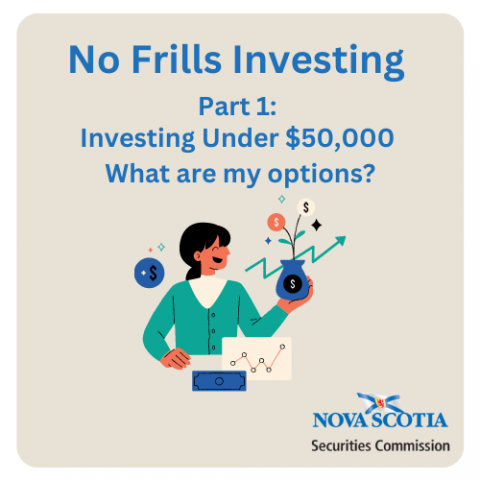Submitted by nsscadmin on

Today we’re starting a new blog series on No Frills Investing. These posts are focussed on investors who don’t have a large amount of money to invest. In today’s economic climate, with heightened inflation, many people may not be able to invest much, whether they’re just starting out or have been in the workforce for decades. Investing wisely is always a good strategy, regardless of how much you have to invest.
If you have less than $50,000 to invest, your choices when it comes to getting investment advice may be limited. If this is the case, before deciding which way to turn you should know the differences among receiving investment advice from an individual registered adviser, receiving advice from a so-called “robo-adviser”, and investing without receiving advice though order execution only (OEO) models.
When you work with a registered adviser, you receive investment advice based on your unique financial situation and goals. Your adviser will collect detailed information from you, and then use it to recommend the investments you should purchase, hold and sell. It will still be up to you to give your adviser the go-ahead to buy or sell individual investments for you. The registered adviser will charge you fees for the advice you receive. Fees can be in various forms, such as an annual fee equal to a percentage of the value of assets in your account (“fee based account”), a fixed transaction fee for each purchase and sale (“commission based”), a percentage of the amount of each purchase (a “load”), or an annual trailer commission paid out of a mutual fund you’ve invested in (“embedded commission”).
You can also receive advice from an automated technology platform or tool that helps you build an investment portfolio. The platform will collect information about your unique financial situation and goals and then generate a portfolio of investments best suited to you. Despite the term “robo-adviser”, there are registered investment professionals behind the development and operation of the platform. You will pay fees for the advice you receive, but they may be much lower than the fees charged by an individual adviser.
If you take your investing business to a registered “discount” broker (often called an “online broker” and officially known as an OEO dealer), they will provide you with OEO service. Registered firms that deliver OEO services do not provide investment advice to their clients. They simply provide you access to their platform to buy and sell investments. It will be up to you to research and determine what investments you will buy, sell, and hold in your portfolio. Discount brokers will usually charge the lowest fees, or in some cases may provide commission-free trading. A no-commission OEO dealer may make its profits through foreign exchange fees, or some other fee structure charged to their clients. Be sure to fully research and understand these fees before signing up with any discount broker.
You should do your research when choosing how to invest from the options above. It may be difficult to find an individual registered adviser who accepts clients with less than $50,000 to invest, unless you want to invest only in mutual funds, and the fees charged by a registered adviser may outweigh the value you receive on a small portfolio. There is generally no minimum investment amount to access a robo-adviser, but the range of investments they recommend can be limited (often mutual funds only). Of course, the main risk in the OEO model is that you have to make all of your own investment decisions, as well as monitor your investments, and this may be daunting
